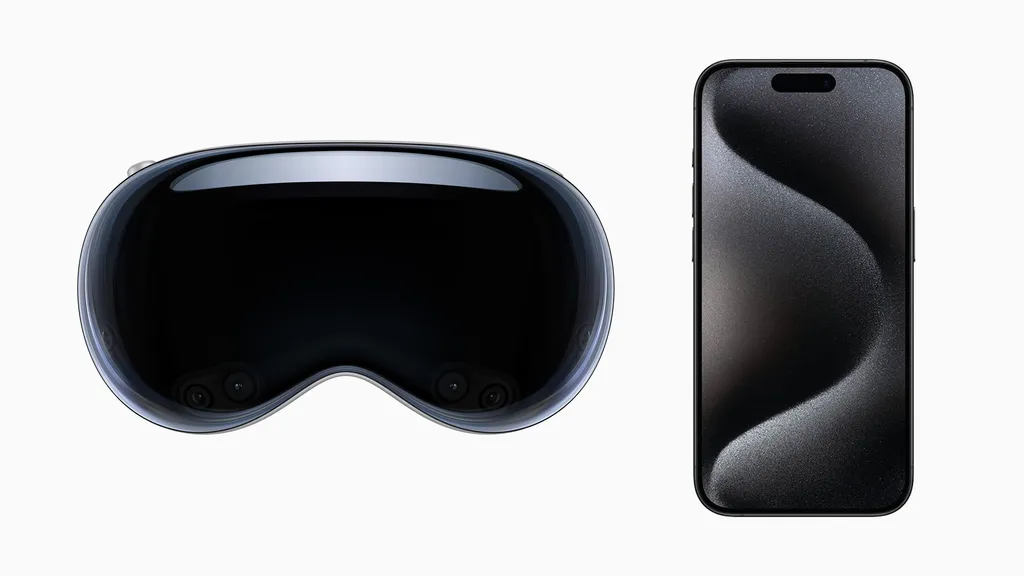In Mark Gurman's latest report he claims Apple is "considering" making the upcoming non-Pro Vision headset "reliant on a tethered Mac or iPhone". But does powering a Vision headset with an iPhone really make sense?
Gurman has a very strong track record when it comes to reporting Apple's moves in advance, and he even revealed many details of Vision Pro before it was officially revealed or even acknowledged to exist by Apple. But like all leakers, occasionally he does get things wrong or at least somewhat misunderstand what his sources are telling him. And I believe this latest claim is an example of that.
It's a tantalizing idea at first thought. Replace Apple Vision Pro's external battery with your iPhone and it could provide not only power but compute too, making the headset both lighter and cheaper. But upon closer inspection, there are a number of reasons this probably couldn't work, and it's simply a bad idea even if it could.
Thermals & Battery
To be clear, the fundamental issue here isn't peak performance. Apple Vision Pro uses the M2 chipset from late 2022. The latest iPhone 15 Pro has a 6-core GPU that's roughly 60% as powerful as M2's, so it's conceivable that the iPhone 17 Pro, which should release around the same time as the cheaper Vision headset, could close the gap. That would of course restrict it to only the latest & greatest iPhone, but this is par for the course for Apple.
The real issue is that devices without a cooling fan like smartphones cannot sustain their peak performance for more than a few dozen minutes at the absolute most. As they reach peak performance, they start to heat up, and eventually they get so hot the system has to intentionally reduce the maximum clock speeds to avoid damaging the processor or ceasing to function. Yes, Apple could include a "case" your iPhone slides into with a cooling fan. But since it wouldn't actually be inside the phone this would be a losing battle, and would force the user to remove their own case every time they wanted to use the headset.
I have a high detail 3D AR App for iPhone and it needs active cooling from start to prevent thermal throttling. The idea of using the iPhone as a compute unit for a cheaper Vision Pro needs to die, it makes no sense. Also Apple can always use a last gen M-series SoC for cheap.
— Rubén de la Torre (@studiodelatorre) June 23, 2024
This is why every standalone headset since Oculus Quest, including Apple Vision Pro, features at least one cooling fan. It's also why handheld consoles like the Nintendo Switch and Steam Deck do too. Without it, they simply couldn't do what they do for more than 20 minutes or so at a time.
Even if this problem could be magically solved by some future cooling system, an iPhone's battery is three times smaller than the battery attached to Apple Vision Pro, which weighs almost twice as much as an iPhone. While A-series chipsets are more power efficient than the M2, it is nowhere near on the order of 300%. So unless Apple went with the horrendously inelegant solution of having both an external battery and an iPhone tethered, there won't even be enough battery to run a Vision headset for more than an hour.
And even if that could somehow be solved, would people really want to drain their iPhone battery in less than two hours, reducing its health? This would be a strong disincentive to using the headset.
But Glasses Might Work
None of this means that Apple couldn't one day release an XR device powered by your iPhone. But for the foreseeable future said device won't be running visionOS, and thus won't be a Vision headset.
Gurman also writes that Apple "has renewed efforts to develop AR-only glasses". In January 2023 he reported Apple had “indefinitely” postponed glasses as the technology wasn't going to be ready any time soon and it was focused on building Vision Pro and the upcoming cheaper Vision headset. Two and a half years later, Apple may have found a path to making that work.
I believe the newly reported "considering" of using an iPhone is far more likely to be in reference to these AR glasses than a Vision headset. Transparent AR displays are far smaller and less power hungry than VR panels, partially because they are only additive, and these systems don't need to constantly sample and process high bandwidth passthrough cameras. Further, transparent AR systems only need to render virtual objects or interfaces, not entire virtual environments, further reducing their power requirements.
Achieving a glasses form factor with true AR capabilities will require offloading at least some compute anyways. Meta's first AR glasses will reportedly use a wireless compute puck (and even its current smart glasses offload many tasks to your phone) so why wouldn't Apple utilize the computing device it already put in your pocket?
But Vision headsets are not AR glasses. They're full blown "spatial computers". And - barring some breakthrough - the thermals, battery, and practicality dictate that a device like that won't be powered by an iPhone any time soon.






























